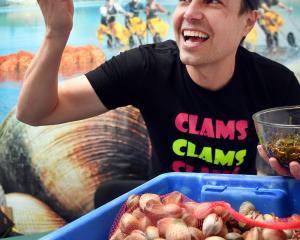
But in fact, Pelorus Jack was a real dolphin, famous for guiding ships between 1888 and 1912 from Cape Francis to Collinet Point, near French Pass, which was a channel used by vessels travelling between Wellington and Nelson.
And now, more than 100 years later, Dunedin sculptor Bryn Jones has unveiled a statue immortalising the tenacious marine mammal.
Mr Jones said he grew up with stories of Pelorus Jack, and his fascination with the dolphin was such that he still has a book about the dolphin in his bookcase.
So when the 52-year-old John McGlashan College head of art was asked a year ago by the Community of French Pass committee if he could immortalise the dolphin in a bronze statue, he did not waste any time accepting the commission.
"I can still remember it from when I was a little kid, so as soon as they asked me about it, I knew straight away what they were talking about, and I wanted to be part of it."
He said creating the sculpture was a lengthy process. Initially, the 3.5m-long life-size sculpture was carved out of polyurethane foam.
It was then cut up into 14 pieces (patterns), which were taken to a foundry, where they were put in a box and sand was packed around it.
The pattern was then taken out of the sand, leaving a cavity, and bronze was poured into it.
Then staff at Allan’s Sheet Metal and Engineering Services welded the 14 pieces together to create a one-tonne effigy of Pelorus Jack.
"Then I got into it with a grinder and a sander, then put patina on it — it’s a chemical compound which colours the bronze. It creates a dark-brown tarnish on it."
Mr Jones said it was not the first time he had been commissioned to create a sculpture.
Others include the Sir Edmund Hillary statue at Mt Cook, the cedar cone at the Dunedin Botanic Garden and the sea lion at St Clair.
Mr Jones said the Pelorus Jack statue would be placed at Collinet Point some time in late September.
"That was the last place Pelorus Jack was seen before he disappeared in 1912.
"It feels pretty remarkable to have immortalised a famous marine animal. Bronze is the ultimate sculpture material, and to see it as a finished piece is brilliant because you know it’s going to last thousands of years."











